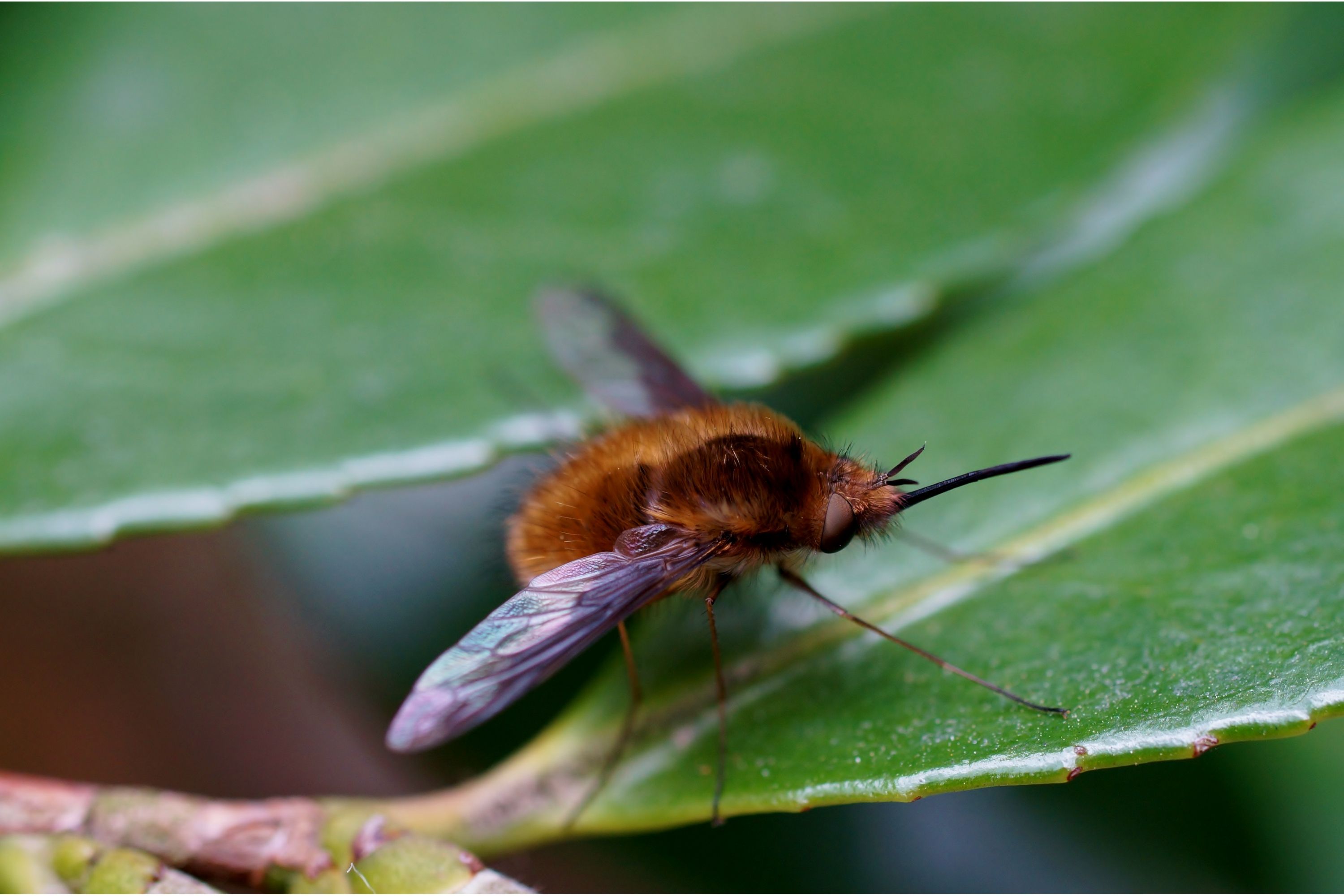Greater bee fly
(Bombylius major)

Description
Bombylius major (commonly named the large bee-fly, the dark-edged bee-fly or the greater bee fly) is a parasitic bee mimic fly. B. major is the most common type of fly within the Bombylius genus. The fly derives its name from its close resemblance to bumblebees and are often mistaken for them. B. major exhibits a unique flight behavior known as "yawing" and plays a role in general pollination, without preference of flower types. The fly does not bite, sting, or spread disease. However, the fly uses this mimicry of bumblebees to its own advantage, allowing close access to host solitary bee and wasp nests in order to deposit its eggs. After hatching, the larvae find their way into the nests to parasitically feed on the grubs. B. major is part of the family Bombyliidae, with a reported 6000 species worldwide. The subfamily Bombyliinae contains approximately 1100 identified species. The genus Bombylius currently comprises around 450 described species. B. major can be found from April to June throughout temperate Europe, North America and some parts of Asia, concentrated in the northern hemisphere. The species occurs across a variety of environments, from arid to moist. The adult body size varies from 6.3–12 mm in length and is considered a relatively medium sized fly. The body color is dark, but is densely covered by a thick coat of lighter color hairs. The head is typically brown and black hairs, but the lower portion of the head is mostly white hairs. It has dark patches on the anterior half of the wings and long hairy legs that dangle while in flight. The dark wing span can range from 8.4–14 mm and has a dark brown edge. Their boldly patterned wings have a distinct dividing border through the horizontal middle between the dark and clear portions. Their antennae are typically very short and pointed. Additionally, the species has long legs and a long rigid proboscis found in the front of the head, which is used to feed on the nectar of flowers. The proboscis ranges from 5.5 to 7.5 mm in length. While its wings continue to beat, its front legs grip the flower and its long rigid beak is inserted to collect the nectar. Despite its fearsome appearance, the beak is quite harmless. Males are typically smaller than females. Movement of the bee is categorized by both hovering and darting between locations. The flies also emit a high-pitched buzz.
Taxonomic tree:







